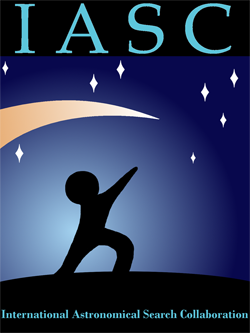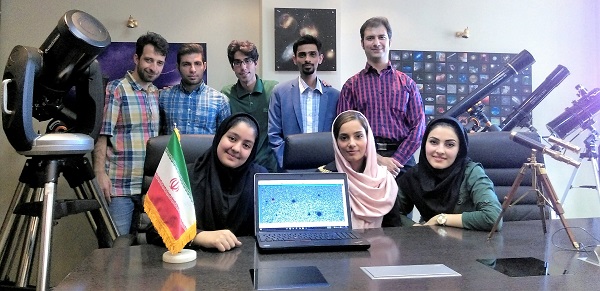APRIL 14 - MAY 12
The AWB-IASC Astronomical Search Collaboration application is now CLOSED!
Astronomers Without Borders and International Astronomical Search Collaboration (IASC=”Isaac”) are sponsoring a special Asteroid Search Campaign as part of Global Astronomy Month. IASC is an online citizen scientist program for teams of citizen scientists to make original astronomical discoveries. Learn more about asteroids on our Observing Resources page.
Many schools have been affected by closures at this time. If you are a teacher and would like to participate with your class, some suggestions for participation methods are found below.
All IASC Asteroid Search Campaigns are completely compatible with remote access. Teams spread around the world regularly communicate through email and collaborate to analyze the image sets.
To participate with your class remotely, the students need to have access to a Windows computer at home with Astrometrica installed. Or, you as the teacher could run Astrometrica from your end and broadcast it over video chat (Google Hangouts, Zoom, etc.) so students can see the images and point out moving objects.
Image sets are accessible through the IASC website. Reports will be submitted through the IASC website. And, IASC offers campaign support through email. As long as you have Internet access, you can participate in an IASC search campaign! With a little online coordination, any teams or schools should be able to participate. As team leader or teacher, you will need to communicate with your team or class and assign image sets to individuals, so that image sets are not analyzed multiple times by different students.
We look forward to seeing your team or school participate in this campaign!

Thirty citizen scientist teams from around the world will be selected to participate. The campaign will start on April 14, 2020 and end on May 12, 2020. To participate, please complete the form at the bottom of the page by March 31, 2020. Teams will be selected based on a one-paragraph description explaining the reasons the team wants to participate. There is no cost to the teams to submit an application or participate.
During the campaign, each team will receive 20 unique sets of images (weather permitting) and search them for asteroids using Astrometrica software. Each image set will be taken along the celestial ecliptic at the University of Hawaii (Pan-STARRS) and will be sent to each team soon after they have been taken. Using the software Astrometrica, the team will accurately measure the time and position of asteroids moving in the background. The measurements are recorded in a report sent to IASC. IASC will provide support through their website to learn the software and to answer questions by email.
Each year 2100 teams participate from more than 80 countries. Since the first search in October 2006, over 1500 asteroids have been discovered and 62 asteroids have been numbered by the International Astronomical Union (Paris). Numbered asteroids are recorded in the world’s official minor planet catalog and will be named by their citizen scientist discoverers.
 Leaders of the Iranian teams in the All-Iran Asteroid Search Campaign
Leaders of the Iranian teams in the All-Iran Asteroid Search Campaign
Note: Even if your team is not selected to participate in this special GAM2020 project, it may still be able to participate in any of the 20 or more other asteroid search campaigns IASC organizes throughout the year.
Download asteroid orbital paths to swell print for the visually impaired from the SEE Project.







